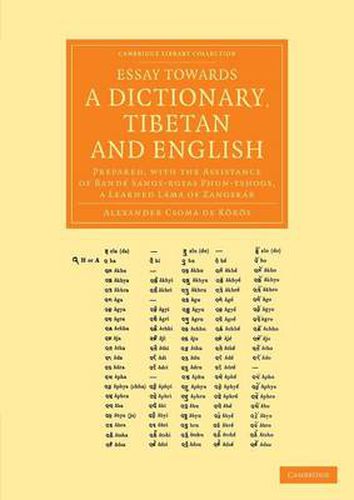Readings Newsletter
Become a Readings Member to make your shopping experience even easier.
Sign in or sign up for free!
You’re not far away from qualifying for FREE standard shipping within Australia
You’ve qualified for FREE standard shipping within Australia
The cart is loading…






Tibetan comprises a cluster of Tibeto-Burman languages spoken across Central Asia. Its classical written form is a major Buddhist language. First published in 1834, this dictionary of Tibetan, believed to be the very first, was compiled by the Hungarian orientalist Koroesi Csoma Sandor (c.1784-1842), who styled himself Alexander Csoma de Koroes in English, and was considered to be the founder of the field of Tibetology. Containing over 20,000 entries with English translations, the dictionary was created during the author’s travels in the East, during which he devoted himself to the study of the language. Remaining of great interest to linguists today, the dictionary begins with a useful guide to reading and understanding Tibetan words, with the value of each syllable given in Roman script. The entries themselves are arranged primarily under the language’s thirty consonants, with irregular verb forms listed where necessary.
$9.00 standard shipping within Australia
FREE standard shipping within Australia for orders over $100.00
Express & International shipping calculated at checkout
Tibetan comprises a cluster of Tibeto-Burman languages spoken across Central Asia. Its classical written form is a major Buddhist language. First published in 1834, this dictionary of Tibetan, believed to be the very first, was compiled by the Hungarian orientalist Koroesi Csoma Sandor (c.1784-1842), who styled himself Alexander Csoma de Koroes in English, and was considered to be the founder of the field of Tibetology. Containing over 20,000 entries with English translations, the dictionary was created during the author’s travels in the East, during which he devoted himself to the study of the language. Remaining of great interest to linguists today, the dictionary begins with a useful guide to reading and understanding Tibetan words, with the value of each syllable given in Roman script. The entries themselves are arranged primarily under the language’s thirty consonants, with irregular verb forms listed where necessary.